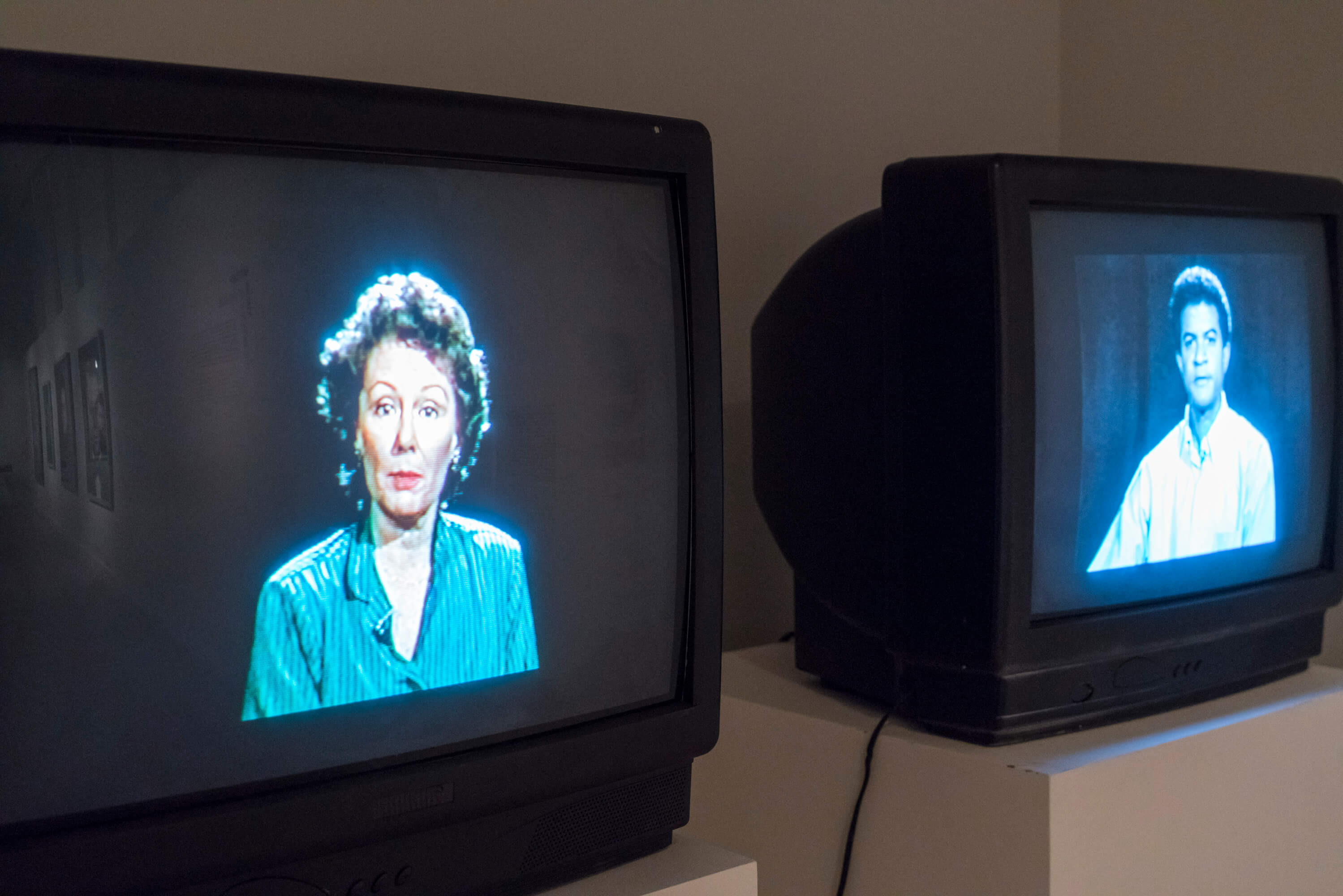Manufraktur
Director: Peter Tscherkassky
Austria, 1985, 3', DCP, b&w
No dialogue
Manufraktur is a found footage film focused on the concept of movement within a space that has always been fundamental to cinema. Short sequences of a race car's tires, which seem poised to crush everything in their path, circulate throughout the "film narrative" and reappear at various points within the frame. As the film progresses, the "events" become increasingly complex and "dangerous." However, it is only the film material itself that collides.
Parallel-Space: Inter-View
Director: Peter Tscherkassky
Austria, 1992, 19', DCP, b&w
No dialogue
Parallel Space: Inter-View was created not with a video camera but with a still camera. The film examines the two emerging halves of space, interpreting them as parallel yet separate worlds: man and woman, present time and memory, viewer and artist, the observer and the observed. It is a film that explores the distance between the gaze and the world, reflecting a quest and a struggle to bridge that gap and achieve togetherness.
Happy-End
Director: Peter Tscherkassky
Austria, 1996, 11', DCP, color
No dialogue
The footage in Happy-End was recorded by a Viennese couple who documented their lives in the 1960s and 70s. These images create a joyful documentary of various celebrations, where the camera naturally became part of the events. At first glance, the condensed scenes in the film, with their somewhat unintentional participants, might appear comedic. However, the palpable carefree spirit and exuberance for life are so infectious that you find yourself laughing with them rather than at them. Simultaneously, the film acts as an elegy for the couple who have long since passed away. Amid the eggnog and sweet pastries, the impermanence of human existence quietly reveals itself. Happy-End is, at its essence, a tragicomedy.
Coming Attractions
Director: Peter Tscherkassky
Austria, 2010, 25', DCP, b&w
No dialogue
Coming Attractions is an avant-garde found footage film that transforms commercial test shoots into an artistic interplay of imagery and montage. Through split screens and manipulated negative images, it reveals a contemplative exploration of avant-garde cinema history. Tscherkassky skillfully and humorously weaves together elements of painting, music, and film theory across eleven segments. The film highlights the repetitions and absurdities of the filmmaking process with affectionate attention to detail and absurd source material. Coming Attractions is a joyful and light-hearted ode to the (conscious or unconscious) flaws and allure of cinema.
The Exquisite Corpus
Director: Peter Tscherkassky
Austria, 2015, 19', DCP, b&w
No dialogue
The film begins with a naked couple on a sailboat drifting through dark waters. Our protagonists come across a beautiful woman sleeping on a deserted beach. From the fourth minute onward, a burst of visual effects takes over: flickering, trembling images, positive-negative flashes, superimpositions, and fades shape the film. The Exquisite Corpus repurposes found film materials (ranging from feature films to amateur and pornographic footage) and lost commercial clips into an analog, handcrafted work of art. By incorporating hypnotic tunes, exotic motifs, and found music, Tscherkassky enhances his mesmerizing vision of lust and seduction. The result is a trance-like, playful exploration of form and style, creating an erotic simulation for the senses.
The screenings will be held with the director in attendance.

The exhibition Look at Me! Portraits and Other Fictions from the ”la Caixa” Contemporary Art Collection examines portraiture, one of the oldest artistic genres, through a significant number of works of our times. Through the exhibition we will be sharing about the artists and sections in Look At Me!.

Berggren acquires the techniques of photography in Berlin and holds different jobs in various European cities before arriving in İstanbul. Initially en route to Marseille, he disembarks from his ship in 1866 and settles in İstanbul, where he is to spend the rest of his life.
Tuesday - Saturday 10:00 - 19:00
Friday 10:00 - 22:00
Sunday 12:00 - 18:00
The museum is closed on Mondays.
On Wednesdays, the students can
visit the museum free of admission.
Full ticket: 300 TL
Discounted: 150 TL
Groups: 200 TL (minimum 10 people)